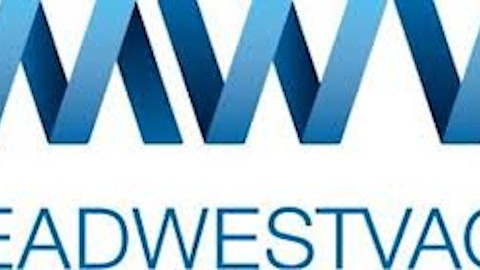
With this the Obama administration is finally showing a willingness to begin turning the US into an energy giant. One part of that is enabling companies to export to nations that don’t have free-trade agreements with the US. LNG companies can export to nations with FTA agreements, such as South Korea, but not to nations that don’t. There is still one more regulatory hurdle for the Freeport LNG project, which is to get approval from the Federal Energy Regulatory Commission.
Japan
One of these nations is Japan, which imported 6 trillion yen (~$65 billion) worth of natural gas in 2012. This is a sharp increase from the 3.5 trillion yen (~$38 billion) in LNG it imported in 2010. Japan’s energy costs have skyrocketed as they have shunned nuclear reactors, shutting them all down (while potentially starting a few up again) and ended investment in the building of new reactors.
Before the 2011 disaster in Fukushima, Japan generated around 30% of its energy from nuclear power and was planning on expanding that to 40% by 2017. Now that that isn’t an option, LNG is. This means the US has an enormous partner to export its vast resources of LNG to. This will create high-paying energy jobs in the US, lower our trade deficit, and will enable Japan to control its high energy costs.
“Theoretically, we may be able to import LNG at two-thirds of the price paid now if we can buy shale gas,” stated an official of the Natural Resources and Energy Agency to the ruling party. “I welcome from the bottom of my heart the U.S. approval of LNG exports,” said trade minister Toshimitsu Motegi. Japan is thrilled to be able to import natural gas from the US because it will lower their energy costs and give them more bargaining power over other LNG exporting nations.
Terminals
Cheniere Energy, Inc. (NYSEMKT:LNG) is going to be a big beneficiary of Japan’s demand, and it will be able to begin exporting to the nation in 2015 as the first company to win approval to export LNG. Cheniere Energy, Inc. (NYSEMKT:LNG) will be able to buy cheap natural gas (probably around $6 to $7 in 2015) and sell it for a nice premium in Japan, where natural-gas prices are around $14.50 right now, and could be higher in the future.
The Freeport LNG terminal, in which ConocoPhillips (NYSE:COP) has a 50% stake according to its website, has already signed early agreements to sell LNG to Japan. ConocoPhillips (NYSE:COP), which produces around 2.5 billion cubic feet of natural gas a day (in Canada and the lower 48 states), will finally be able to sell that gas for a profit, and a nice one at that.
Higher prices?
Those against LNG exports will point towards the US “losing its competitive advantage” as natural gas prices rise, pushing up energy costs. But as the number of natural-gas rigs has fallen from 875 to 350, we are still producing ~7 billion more cubic feet of natural gas a day in the lower 48 states. This is why Henry Hub prices are at $4/million British thermal unit (Btu) right now, which is way below the cost of production.
This means that we have an excess of gas and that natural-gas producers can’t be profitable, which is extremely detrimental to the US economy and deters investment in the industry. In order to change that, natural-gas prices will have to rise, which will hurt Dow Chemical’s margins slightly (which I can live with), but will still be a net gain for the US economy.
Natural-gas prices could easily rise to the $5 to $7 level by the time LNG exports start, which means that we will still have the competitive pricing advantage for exports and that natural-gas producers will be able to be profitable, spurring investment. ConocoPhillips (NYSE:COP) has said that it would need prices to be in the $5 to $6 range before it returns its focus to natural-gas production.
Exxon Mobil Corporation (NYSE:XOM), the biggest natural-gas producer in the US (in terms of volume and size), needs higher natural-gas prices; as does Chesapeake Energy Corporation (NYSE:CHK), the second-biggest natural gas producer (in terms of volume).
With Exxon Mobil Corporation (NYSE:XOM), low natural-gas prices have cut into its margins and profits, making the company seem less profitable. But when prices rise, instead of having natural gas drag on earnings, it will boost them. This will push Exxon Mobil Corporation (NYSE:XOM)’s stock higher over the next couple of years.
Chesapeake Energy Corporation (NYSE:CHK) has been trying to move into natural-gas liquids and crude oil production, but still is largely a natural-gas producer. It has a $3.5 billion funding shortfall for 2013 for its operations and CapEx programs, so higher natural-gas prices will reduce its need to have to sell off assets and cannibalize itself just to get by.
Final thoughts
The US is about to become the Saudi Arabia of natural gas, and green lighting LNG exports was a good move by the president (took him a while, but still). These are several players ready to produce, liquefy, and move the LNG around the world while creating millions of jobs in the US. Bullish on natural gas and the future of US LNG exports.
The article Natural Gas Gets a Green Light originally appeared on Fool.com and is written by Callum Turcan.
Callum Turcan has no position in any stocks mentioned. The Motley Fool has the following options: Long Jan 2014 $20 Calls on Chesapeake Energy, Long Jan 2014 $30 Calls on Chesapeake Energy, and Short Jan 2014 $15 Puts on Chesapeake Energy. Callum is a member of The Motley Fool Blog Network — entries represent the personal opinion of the blogger and are not formally edited.
Copyright © 1995 – 2013 The Motley Fool, LLC. All rights reserved. The Motley Fool has a disclosure policy.

